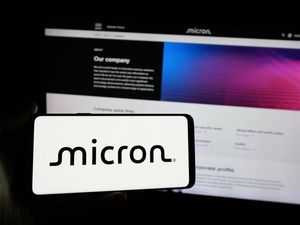AU-011 Demonstrates Targeted Cytotoxicity In Vitro and In Vivo in Both Breast and Lung Tumors, Demonstrating the Potential to Treat Human Choroidal Metastases
Tumor Distribution of AU-011 in the Treatment of Choroidal Melanoma Also Presented Using Intravitreal and Suprachoroidal Administration
Aura Biosciences, a clinical-stage oncology company developing a novel class of virus-like drug conjugate (VDC) therapies for multiple oncology indications, today announced the presentation of supportive preclinical data in multiple tumor models of choroidal metastases and in choroidal melanoma using suprachoroidal administration. The data will be featured in two virtual poster presentations at the Association for Research in Vision and Ophthalmology (ARVO) 2021 Annual Meeting, taking place May 1-7, 2021.
Choroidal metastasis is a second ocular oncology indication for Aura’s lead VDC candidate AU-011, which is also currently in Phase 2 development for the treatment of choroidal melanoma. New preclinical data presented at the meeting demonstrates the potential of AU-011 for the treatment of choroidal metastases from breast and lung cancer, which are the most common causes of metastases in the choroid.
“Thanks to recent advances with treatment options for metastatic cancer, patients are living longer, and the incidence of choroidal metastases from breast and lung cancer has become an increasingly important issue that dramatically impacts patient’s vision and their overall quality of life,” said Amy Schefler, MD, FACS, Associate Professor of Clinical Ophthalmology, Weill Cornell Medical College and Ocular Oncology Specialist, Retina Consultants of Houston. “The data show that AU-011 has the potential to offer a new, vision preserving targeted therapy that may eliminate the need for the treatment with local radiotherapy for many patients with choroidal metastases. We believe these data support the further clinical development of AU-011 in this additional ocular oncology indication which has the potential to transform visual outcomes and the quality of life for patients with cancer and we look forward to sharing these results with the medical and scientific community at the meeting.”
Effect of AU-011 on Preclinical Models of Choroidal Metastases
The purpose of this study was to evaluate the potential of AU-011 to treat choroidal metastases by evaluating its effect on a panel of human breast and lung cancer cell lines in vitro and in vivo in a murine breast cancer model. In both cell line panels, AU-011 demonstrated potent cell binding and cell killing activity with EC50 in the picomolar range. In vivo, a single systemic administration of AU-011 in a syngeneic breast cancer mouse model demonstrated potent cytotoxic activity with significant reduction of tumor growth, further corroborating data previously obtained in other cancer models. These results suggest that AU-011 can bind to and kill tumor cells derived from the most common cancer types known to metastasize to the choroid and supports further development of AU-011 as a vision preserving therapy for the treatment of choroidal metastases.
Tumor distribution of AU-011 with IVT and SC Administration in an Orthotopic Rabbit Model of Uveal Melanoma
Aura evaluated the distribution of AU-011 with both intravitreal (IVT) and suprachoroidal (SC) administration in an orthotopic rabbit model of choroidal melanoma, which demonstrated both routes of administration achieved tumor distribution to the choroid and to the tumor. Following SC administration, negligible levels of AU-011 were observed in the vitreous, but high exposure levels were observed in the tumor and choroid/retina. The exposure of AU-011 in the tumor was approximately 5 times higher when AU-011 was administered by SC injection compared to IVT injection. The exposure remained high in the tumor up to 48 hours post injection for both routes of administration.
Cadmus Rich, MD, MBA, Chief Medical Officer and Head of Research and Development at Aura Biosciences commented, “The suprachoroidal delivery route has the potential to offer certain advantages over intravitreal injection, including superior distribution, higher bioavailability and less unintended exposure in the vitreous and other key ocular structures. We believe these characteristics may lead to less intraocular inflammation, an improved safety profile and a broader therapeutic index. A Phase 2 clinical trial evaluating SC administration of AU-011 in patients with choroidal melanoma is currently ongoing.”
Details for the ARVO 2021 presentations are as follows:
Title: Development of AU-011 for Choroidal Metastasis
Presenter: Cadmus Rich, Aura Biosciences
Abstract #: 3547059
Session: Advances in intra and extra ocular pathologies
Date and time: May 5, 2021 from 2:45 – 4:30 PM EDT
URL: https://arvo2021.arvo.org/meetings/virtual/rX366WKTbayR7Pehy
Title: Ocular Distribution and Exposure of AU-011 After Suprachoroidal or Intravitreal Administration in an Orthotopic Rabbit Model of Human Uveal Melanoma
Presenter: Anneli Savinainen, Aura Biosciences
Abstract #: 3543497
Session: Recent Advances in Uveal Melanoma
Date and time: May 2, 2021 from 9:00 to 10:45 AM EDT
URL: https://arvo2021.arvo.org/meetings/virtual/Kicj9AczkcowRfxLs
The presentations can be accessed by ARVO members on the ARVOLearn website. The presentations can also be accessed by visiting the “Presentations” section of “News and Publications” page of the Aura Biosciences website.
About Choroidal Melanoma and Choroidal Metastasis
Choroidal melanoma is a rare and life-threatening type of eye cancer. It is the most common primary intraocular cancer in adults and develops in the uveal tract of the eye. No targeted therapies are available at present, and current radiotherapy treatments can be associated with severe visual loss and other long-term sequelae such as dry eye, glaucoma, cataracts, and radiation retinopathy. The most common current treatment is plaque radiotherapy, which involves surgical placement of a radiation device on the exterior of the eye over the tumor. The alternative is enucleation, or total surgical removal of the eye. Choroidal melanoma metastasizes in approximately 50 percent of patients with liver involvement in 80-90% of cases and, unfortunately, metastatic disease is universally fatal (source: OMF). Choroidal metastases is when cancer that started elsewhere in the body spreads to the eye. The common primary cancers that metastasize to the choroid include, in descending order, breast, lung, gastrointestinal, kidney, skin and prostate. In 31% of cases a primary cancer diagnosis is not made at the time of the choroidal metastasis diagnosis. There is a very high unmet need for a new vision sparing targeted therapy that could enable early treatment intervention for this life-threatening rare disease given the lack of approved therapies, and the comorbidities of radioactive treatment options.
About Light-Activated AU-011
AU-011 is a first-in-class virus-like drug conjugate (VDC) therapy in clinical development for the first line treatment of choroidal melanoma. The virus-like component of the VDC selectively binds unique heparin sulphate proteoglycans (HSPGs) that are modified and overexpressed on the tumor cell surface of malignant cells in the choroid and delivers a potent cytotoxic drug that is activated with infrared light. Upon activation with an ophthalmic laser, the cytotoxic drug rapidly and specifically disrupts the cell membrane of malignant cells with a pro-immunogenic cell death that can activate the immune system generating long term anti-tumor immunity. The unique specificity of tumor binding by the VDC enables the preservation of key eye structures, which may allow for the potential of preserving patients’ vision and reducing other long-term complications of radiation treatment. AU-011 can be delivered using equipment commonly found in an ophthalmologist’s office and does not require a surgical procedure, pointing to a potentially less invasive, more convenient therapy for patients and physicians. AU-011 for the treatment of choroidal melanoma is currently in Phase 2 clinical development and the company plans to expand the clinical program into choroidal metastasis.
About Aura Biosciences
Aura Biosciences, Inc. is a clinical-stage oncology company developing a novel technology platform based on virus-like drug conjugates (VDCs) to target and destroy cancer cells selectively while activating the immune system to create long lasting anti-tumor immunity. The VDC technology platform is based on the discoveries of NIH Distinguished Investigator Dr. John Schiller of the Center for Cancer Research at the National Cancer Institute (NCI). The company has the goal of developing this technology in multiple cancer indications with an initial focus in ocular oncology, a group of rare diseases for which there are no approved drugs. Aura’s lead product candidate belzupacap sarotalocan (AU-011) is currently in Phase 2 development for the first line treatment of choroidal melanoma, a vision and life-threatening form of eye cancer where standard of care radioactive treatments leave patients with major vision loss and severe comorbidities. Aura has demonstrated the efficacy and safety of AU-011 in a Phase 1b/2 trial, including high rates of tumor control and vision preservation. Future pipeline applications for Aura’s technology include additional ocular oncology indications like choroidal metastases and solid tumor indications like non-muscle invasive bladder cancer. Aura is headquartered in Cambridge, MA. For more information, visit www.aurabiosciences.com or follow us on Twitter.
View source version on businesswire.com: https://www.businesswire.com/news/home/20210503005275/en/
Contacts
Investor and Media:
Joseph Rayne
Argot Partners
617.340.6075 | joseph@argotpartners.com





